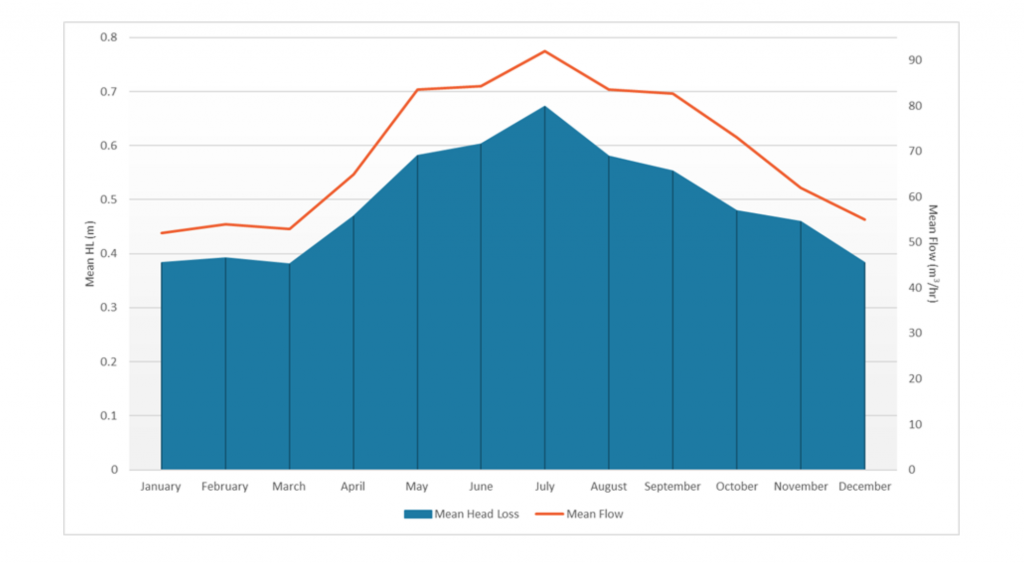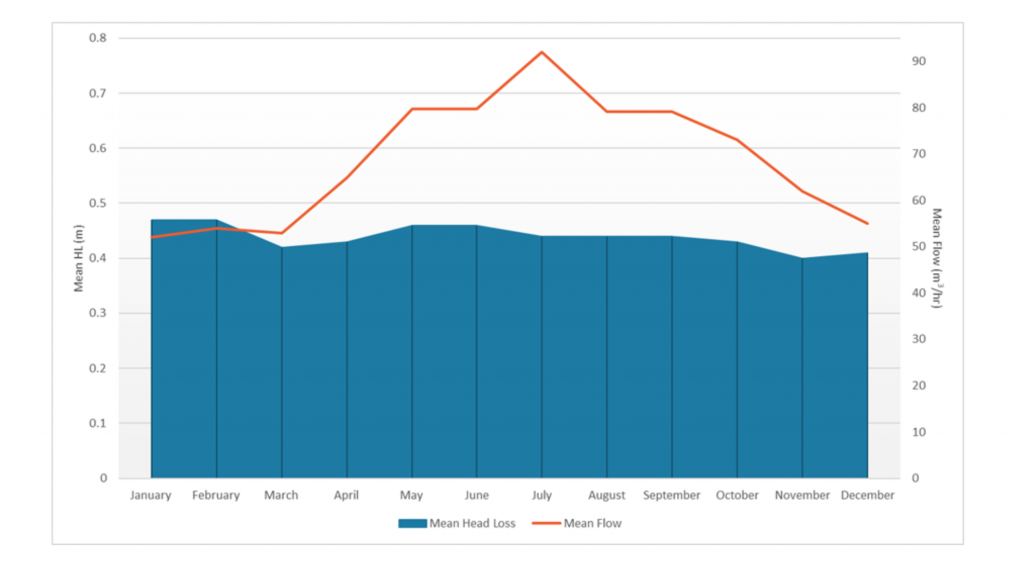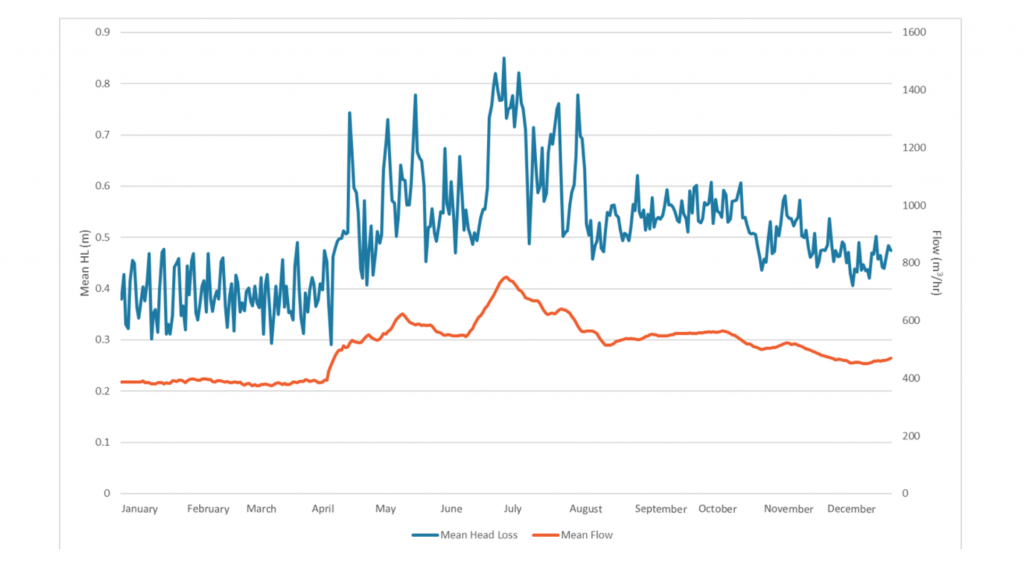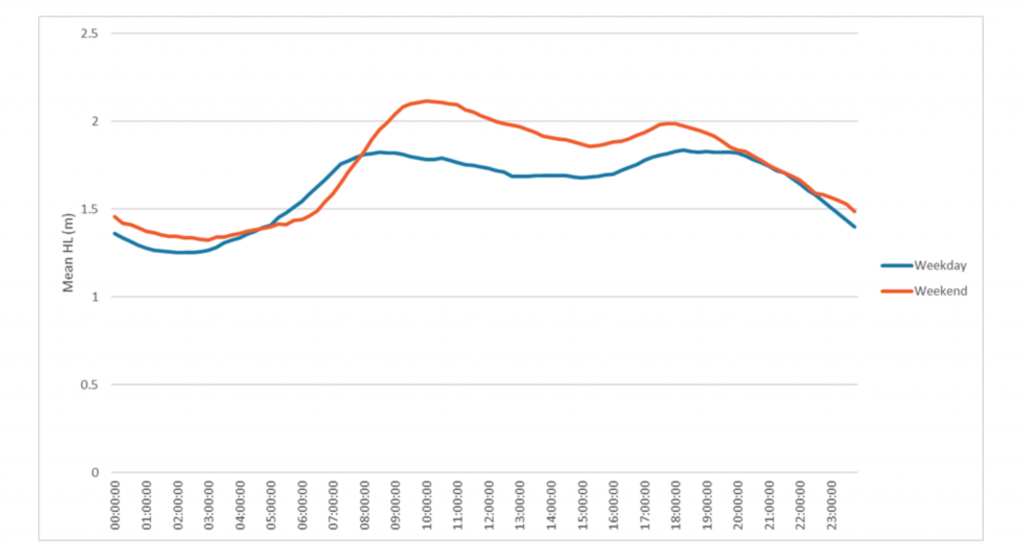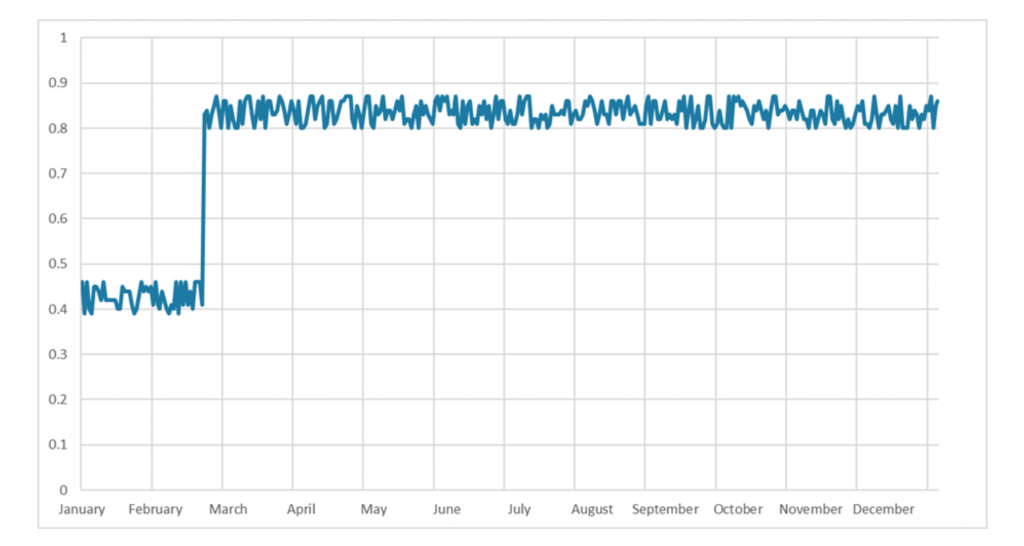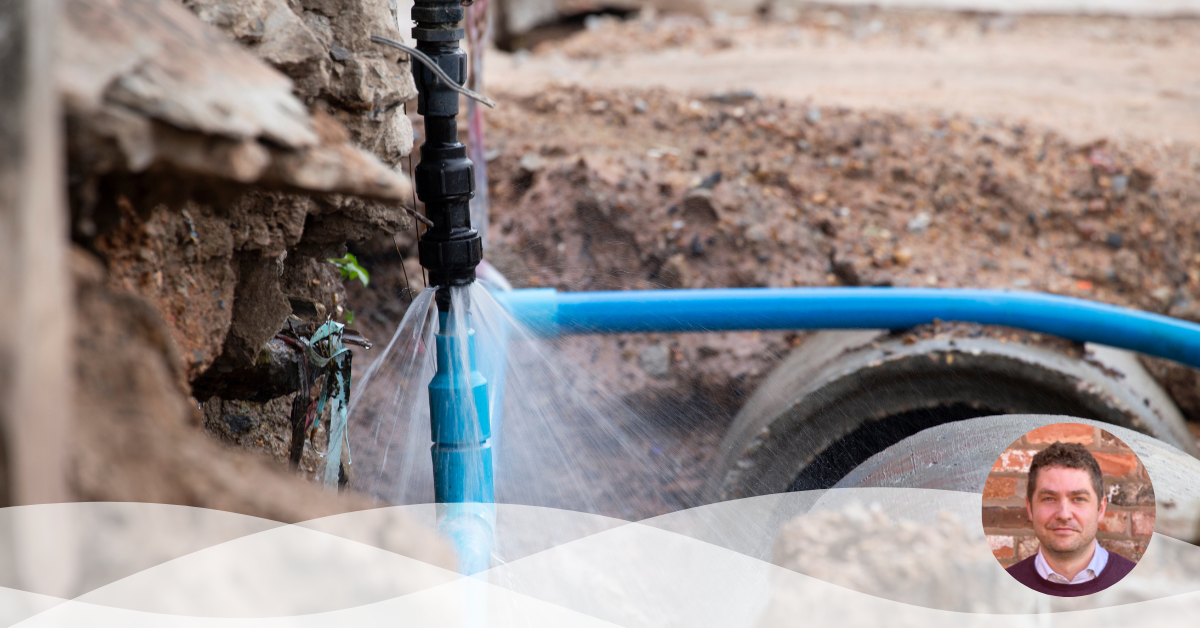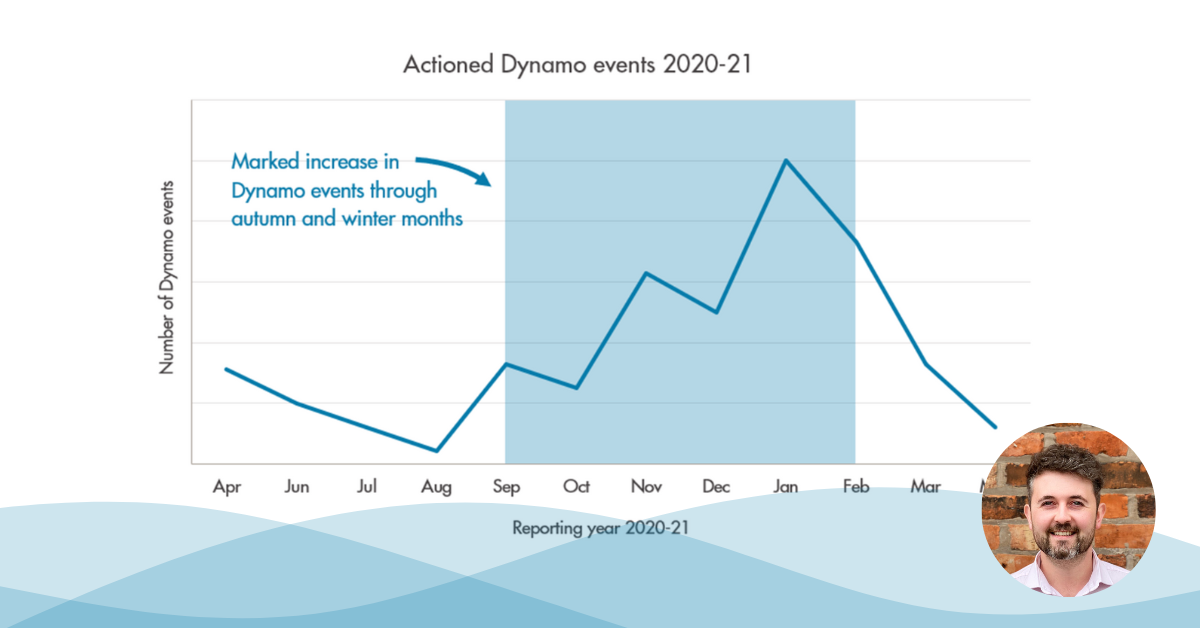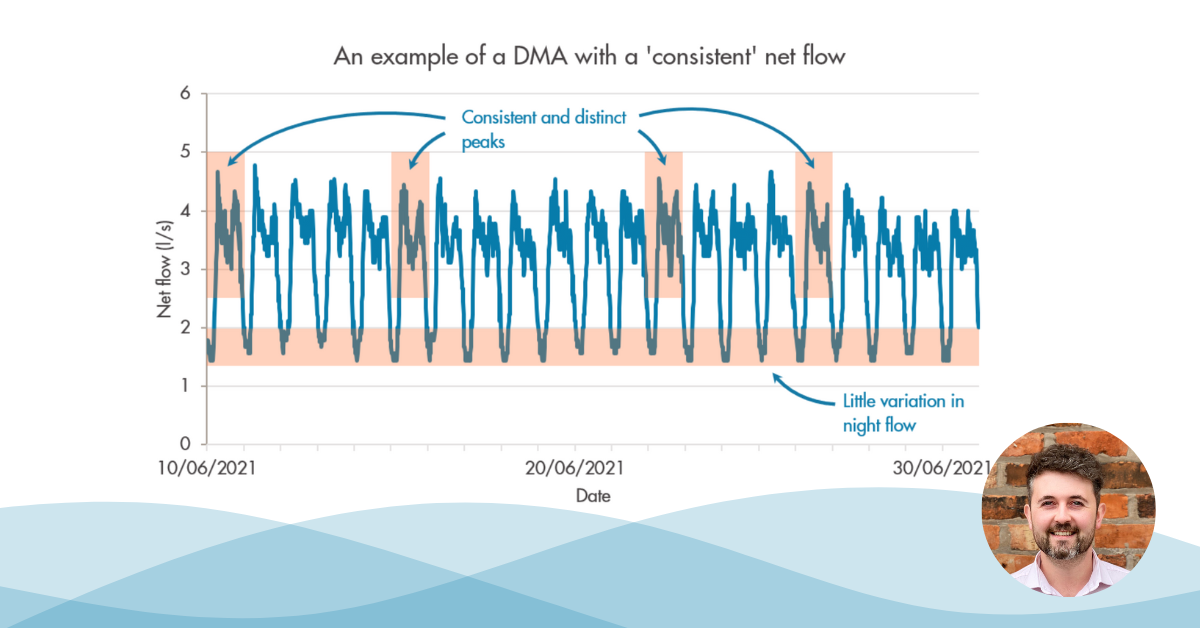Over the past couple of years, we have worked with a number of UK water companies to deploy increased pressure logging within District Metered Areas (DMAs) and to then investigate the added benefit to be gained from this extra monitoring. Here we highlight some of the insights that we have gained from analysing this data over a longer period of time.
DMAs are traditionally monitored for flow, to help calculate and analyse leakage, and monitored for pressure, to ensure security of supply to all customers.
The only time there is significant extra monitoring within a DMA is when required for calibrating network hydraulic models. Even then, this deployment only lasts for a period of 1-2 weeks. This means that we only benefit from this extra monitoring for a very short period of time and therefore miss out on acquiring any further insights on DMA performance. For example:
- How does a particular DMA behave during a burst?
- How does it vary with seasonal consumption?
- Are there parts of the DMA that are particularly susceptible to poor pressures due to unknown bottlenecks?
Having had increased coverage of pressure logging for over 3 years in some DMAs, we are starting to gain some fascinating insights into their performance.
One of the most effective ways of analysing the pressure data recorded on the network has been to investigate how the pressure data from one sensor behaves in relation to other sensors in a DMA. This has been yielding a variety of insights.
Seasonal consumption
It is well established that customer consumption is seasonal. In general, more water is used in the warmer summer months than in the colder winter months. Analysing head loss across pairs of sensors has allowed us to gauge which parts of the DMA are significant contributors to this seasonal use.
Figures 1 and 2 show how the mean daily head loss for two pairs of pressure sensors within a DMA compare to the mean daily flow at the DMA meter over the period of one year.
Figure 1: Mean head loss over a year for a residential area within a DMA
Figure 2: Mean head loss over a year for an industrial park within a DMA
The mean head loss profile for the residential area shown in Figure 1 is highly correlated with the profile of the mean daily flow, whereas the industrial park within the same DMA shown in Figure 2 shows very little correlation. This suggests that the flow across the residential area is highly significant in explaining the seasonal variation seen on the flow meter, whereas the flow across the industrial park is not. This may provide a useful insight into developing a method to allocate night use allowances that vary with season at a very localised level and therefore help calculate more accurate leakage.
Unexpected consumption
The cyclical behaviour of customer consumption has become a recurring theme after analysing hundreds of DMAs and thousands of sensors. Figure 3 shows the mean daily head loss across a single pair of sensors within a DMA alongside the mean daily flow.
Figure 3: Mean daily head loss across two loggers showing cyclical spikes
In this example, there are clearly periodic peaks which are not visible on the flow at the district meter. This periodic peaking happens to occur each Sunday and is not visible on any other flow path (pair of loggers) within the DMA. This tells us that there is an increase in flow each Sunday in one specific area of the DMA. On further investigation, a comparison of head loss profiles during weekdays and weekends (shown in Figure 4) also clearly demonstrates this difference.
Figure 4: Mean diurnal head loss profiles showing a varying behaviour between weekdays and weekends
This raises a number of questions for further investigation:
- What kind of customer may be contributing towards such consumption?
- Is it worth investigating further?
- Is there a reported leakage benefit to identifying this usage?
Significantly, there appears to be a higher night usage during the weekend, which would be currently calculated as extra leakage rather than allocated as consumption. Understanding this allows our clients to ensure that leakage is properly understood and reported.
Long running bursts
In some instances, subtle yet clear and sustained increases in head loss across some flow paths point towards undetected bursts.
Figure 5: Mean head loss across two loggers showing a long-standing burst
Figure 5 clearly shows an increase of approximately 0.4 metres in head loss, but this then persists for over a year before a customer reported the burst and it was repaired. Looking at the data above, this burst could have been found much earlier and thousands of litres of water could have been saved.
Conclusion
These examples provide a glimpse into some of the insights and secrets that DMAs are starting to reveal, having been permanently pressure monitored. Some DMAs are more ‘expressive’ than others and what we have realised is how incredibly unique DMA behaviour can be.
Previously, we have tended to group DMA behaviours and characteristics and applied these behaviours with a broad brush across the network. This has been mainly due to the limited number of sensors and therefore the amount of data available on the network.
With the increase of network monitoring and the advancement of methods in analysing large volumes of data, this creates new opportunities for us to build increasingly complex models. Using machine learning techniques, we can accurately identify and detect anomalies and even predict future issues based on the historic performance of an individual DMA.

